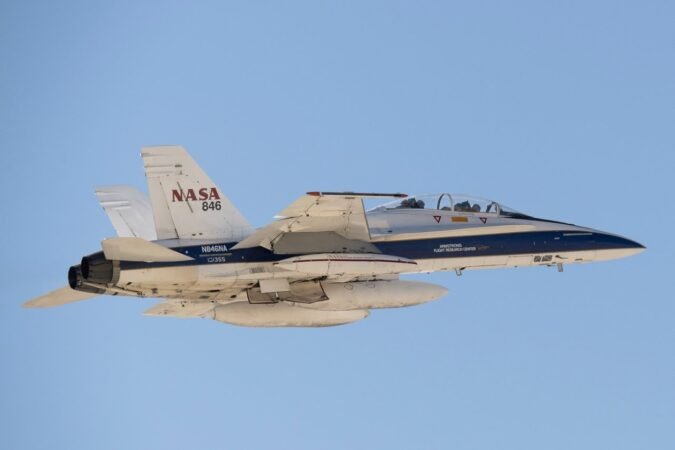Top Highlights
-
NASA successfully tested the Psionic Space Navigation Doppler Lidar (PSNDL) system under an F/A-18 Hornet, showcasing its accuracy for future lunar and Mars landings.
-
The PSNDL system combines miniaturized NASA technology with enhanced functionalities, redundancy features, and additional components like cameras for precise navigation and landing.
-
Flight tests conducted over Death Valley involved dynamic maneuvers to collect crucial data across various conditions, vital for planning space entry and descent.
- Psionic has received significant support from NASA for the development and testing of PSNDL, demonstrating its readiness for integration into commercial lunar missions and advanced space exploration.
NASA recently tested a groundbreaking technology aimed at enhancing future space missions. The Precision Space Navigation Doppler Lidar (PSNDL) system, nestled under an F/A-18 Hornet aircraft wing, flew high above California. During these tests, the aircraft reached speeds approaching the speed of sound, demonstrating the sensor’s accuracy and navigational precision in challenging conditions. This advancement plays a crucial role in preparing for human and robotic landings on the Moon and Mars.
Rooted in NASA’s innovative research, Psionic, Inc. of Hampton, Virginia, further developed this technology. They miniaturized the original system, added functionality, and enhanced its durability for spaceflight. The PSNDL not only includes advanced sensors but also features cameras and an inertial measurement unit. This combination allows it to effectively determine a spacecraft’s position and velocity, ensuring accurate landings.
The flight tests took place over several days in February 2025, departing from NASA’s Armstrong Flight Research Center. The F/A-18 aircraft performed dynamic maneuvers over Death Valley and flew large figure-8 loops to collect vital navigation data. This exercise focused on various altitudes, speeds, and orientations, simulating conditions relevant for lunar and Martian entries and descents. Additionally, the refurbished F/A-18 pod supports low-cost data collection for diverse technologies.
Doppler Lidar sensors deliver precise speed measurements by detecting frequency shifts in laser light reflected from the ground. Such sensors prove invaluable, particularly in areas with intense sunlight and contrasts, like the lunar South Pole. By integrating PSNDL with cameras, scientists can visually compare images with surface maps, allowing for the safe navigation of rugged landscapes on Mars. This robust system enables real-time decisions, facilitating precise touchdowns on planetary surfaces.
Psionic has actively collaborated with NASA since licensing NDL in 2016. With support from the Space Technology Mission Directorate’s Small Business Innovative Research program, the company received funding necessary for further development. They have already tested prototypes on various suborbital vehicles. In 2024, aboard a commercial lunar lander, NASA successfully showcased the precursor to this advanced navigation system, further solidifying its potential for future exploration.
As technology evolves, systems like PSNDL will revolutionize how we explore the universe. Improved precision in landings not only enhances safety but also expands the possibilities for scientific discovery on other planets. Thus, these advancements create exciting prospects for humanity’s future in space.
Discover More Technology Insights
Dive deeper into the world of Cryptocurrency and its impact on global finance.
Explore past and present digital transformations on the Internet Archive.
SciV1

